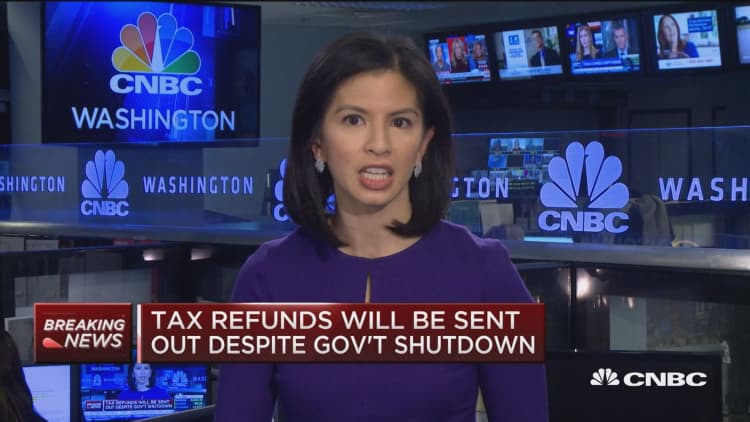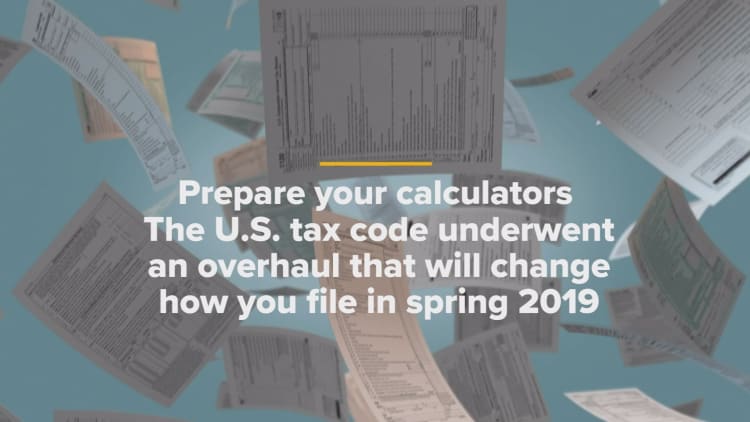Uncle Sam may be on hiatus. That doesn't mean your tax payments aren't still due.
If you're making estimated payments, the money for the fourth quarter of 2018 must be paid by Jan. 15.
And no, you do not get a reprieve because of the government shutdown.
Not all government entities are out of commission. The IRS said recently that it has recalled a "significant portion" of its employees, who are currently furloughed.
That means tax filing season will begin on time on Jan. 28. Refunds are also expected to be paid out as scheduled.
And payments to the IRS also still need to be completed.

Estimated tax payments apply to income that has not already had taxes withheld. That may include a range of sources, such as unemployment income, Social Security benefits, interest, dividends and alimony.
If you do not make the deadline for your estimated quarterly tax payment, you may face a penalty. That goes even if a refund is due when you file your income tax return.
To make sure your payment is completed on time, be sure to mail it so that it is postmarked on or before the due date. Or, you can make your payment online up until the deadline using IRS Direct Pay.
How to calculate payments
"The idea behind estimated payments is to pay just enough to avoid an underpayment penalty, but don't pay any more than you need beyond that," said Tim Steffen, director of advanced planning at Baird Private Wealth Management.
To avoid having to pay a penalty, you want your total payments for the year to be equal to either: 90 percent of your actual 2018 tax liability or 100 percent of your actual 2017 tax liability — whichever is less.
If your adjusted gross income in 2017 was more than $150,000, you should shoot for 110 percent instead of 100 percent.
More from Personal Finance:
Refunds from the IRS may go out, but hurdles to complete your return remain
IRS confirms tax season will start Jan. 28, despite government shutdown
Do-it-yourself online filers may need to ask for some help this tax season
"If you hit one of those two targets, it doesn't matter what you'll have to pay when you actually file your return," Steffen said. "You generally won't be subject to a penalty."
Calculating your liability
Keep in mind that the new tax rules could change how much you owe.
If you base your payments on your 2017 taxes, it will give you a fixed target, Steffen said.
At the same time, roughly 80 percent of taxpayers will have a smaller tax liability for 2018 compared to 2017. As a result, you could end up paying more than you need to if you use 2017 to gauge your payments.

If you use 2018 instead and do not know what your total tax hit will be, do a rough calculation and plan to pay 93 percent to 95 percent of the liability, Steffen suggested. That will give you some cushion.
Remember you will owe a penalty to the IRS if you underpay. As of April 2018, that number was raised to 5 percent annually, up from 4 percent, of the amount owed.
Finally, don't forget to make an estimated tax payment to your state, if you think you'll owe one, Steffen said.


